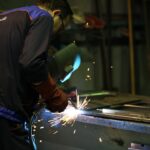When you decide to undergo laser hair removal, you are opting for a method that promises long-lasting results and a reduction in unwanted hair. The process begins with a consultation, where a trained professional assesses your skin type, hair color, and the area you wish to treat. This initial meeting is crucial as it helps determine the most effective laser settings tailored to your specific needs.
You may find yourself discussing your hair removal goals, any previous experiences with hair removal methods, and your skin’s sensitivity. This dialogue sets the stage for a successful treatment plan. Once you are ready to proceed, the actual procedure involves the use of a laser device that emits concentrated light beams targeting the pigment in your hair follicles.
As the laser penetrates the skin, it converts light into heat, effectively damaging the follicles and inhibiting future hair growth. You might feel a slight tingling sensation or warmth during the treatment, but many find it tolerable. Depending on the size of the area being treated, each session can last anywhere from a few minutes to over an hour.
Afterward, you may notice some redness or swelling, which is entirely normal and typically subsides within a few hours.
Key Takeaways
- Laser hair removal involves using a concentrated beam of light to remove unwanted hair.
- Pulling out loose hairs after laser hair removal can lead to potential risks such as skin irritation and infection.
- Pulling out loose hairs can affect the results of laser hair removal by disrupting the hair growth cycle.
- Tips for managing loose hairs after laser hair removal include gently exfoliating the skin and using soothing creams.
- Alternatives to pulling out loose hairs after laser hair removal include using a soft brush or waiting for the hairs to fall out naturally.
Potential Risks of Pulling Out Loose Hairs After Laser Hair Removal
After undergoing laser hair removal, you may notice some hairs that appear loose or are easily plucked from the skin. While it might be tempting to remove these hairs, it’s essential to understand the potential risks involved. Pulling out loose hairs can disrupt the healing process initiated by the laser treatment.
The laser works by damaging hair follicles to prevent future growth; however, when you pull out hairs prematurely, you may inadvertently stimulate those follicles, leading to irritation or even inflammation. Moreover, pulling out hairs can increase your risk of developing ingrown hairs or infections. The skin in the treated area is often sensitive post-treatment, and any additional trauma can exacerbate this sensitivity.
You might find that your skin reacts negatively, resulting in redness or bumps that could have been avoided had you left the hairs alone. Understanding these risks is crucial for maintaining the integrity of your treatment and ensuring optimal results.
How Pulling Out Loose Hairs Can Affect the Results of Laser Hair Removal

The results of laser hair removal hinge on the careful targeting of hair follicles during treatment. When you pull out loose hairs, you may disrupt this delicate balance. The laser treatment is designed to target hair in its active growth phase; however, by removing hairs manually, you could inadvertently affect the growth cycle of surrounding follicles.
This disruption can lead to uneven hair regrowth or even stimulate dormant follicles that were not initially targeted by the laser. Additionally, pulling out hairs can lead to a phenomenon known as “hair shedding.”After laser treatment, it’s common for treated hairs to fall out naturally over a period of days or weeks. If you pull out these hairs before they are ready to shed naturally, you may interfere with this process and potentially reduce the overall effectiveness of your treatment. This could result in a less satisfactory outcome than anticipated, leaving you frustrated and questioning whether the procedure was worth it.
Tips for Managing Loose Hairs After Laser Hair Removal
| Tip | Description |
|---|---|
| Regular Exfoliation | Gently exfoliate the treated area to help remove loose hairs. |
| Moisturize | Keep the skin moisturized to prevent dryness and help hairs shed naturally. |
| Avoid Sun Exposure | Avoid direct sun exposure on the treated area to prevent irritation and help hairs fall out. |
| Avoid Waxing or Plucking | Avoid waxing or plucking the treated area to allow the hairs to shed on their own. |
Managing loose hairs after laser hair removal requires a gentle approach to ensure that you do not compromise your results. One effective strategy is to simply allow the hairs to fall out on their own. This natural shedding process typically occurs within two weeks post-treatment and is part of how the laser works to eliminate unwanted hair.
By resisting the urge to pull them out, you give your skin time to heal and recover from the procedure. If you find that loose hairs are bothersome or unsightly, consider using a soft washcloth or gentle exfoliating scrub during your shower routine. This can help dislodge any loose hairs without causing trauma to your skin.
Additionally, keeping your skin moisturized can promote healing and comfort during this period. Opt for fragrance-free lotions or gels that are designed for sensitive skin to avoid irritation. By taking these steps, you can manage loose hairs effectively while safeguarding the results of your laser hair removal.
Alternatives to Pulling Out Loose Hairs After Laser Hair Removal
Instead of resorting to pulling out loose hairs after your laser hair removal session, there are several alternatives that can help you maintain comfort and aesthetics without compromising your results. One option is to use a pair of clean tweezers to gently remove any stray hairs that are clearly outside of the treated area. However, it’s crucial to exercise caution and avoid pulling at any hairs that feel firmly rooted.
Another alternative is to embrace temporary hair removal methods that do not involve pulling at the roots. For instance, using a gentle depilatory cream can help remove surface hair without affecting the follicles targeted by the laser treatment. Just be sure to conduct a patch test first to ensure that your skin does not react negatively to the product.
Additionally, if you feel comfortable doing so, consider consulting with your practitioner about safe methods for managing loose hairs post-treatment.
Consulting with a Professional Before Pulling Out Loose Hairs

Before making any decisions about pulling out loose hairs after laser hair removal, it’s wise to consult with a professional who understands your specific situation. Your practitioner can provide personalized advice based on your skin type and treatment history. They may offer insights into how best to manage any discomfort or aesthetic concerns without jeopardizing your results.
During this consultation, don’t hesitate to ask questions about what to expect in terms of hair shedding and healing after your procedure. Understanding the timeline for natural hair loss can help alleviate any anxiety you may have about loose hairs. Your practitioner may also recommend specific products or techniques tailored to your needs, ensuring that you have all the information necessary for optimal post-treatment care.
Understanding the Healing Process After Laser Hair Removal
The healing process following laser hair removal is an essential aspect of achieving successful results. Immediately after treatment, it’s common for your skin to exhibit some redness or swelling as it reacts to the laser’s energy. This response is typically mild and should subside within a few hours or days.
During this time, it’s crucial to avoid sun exposure and harsh skincare products that could irritate your sensitive skin. As your skin heals, you may notice that treated hairs begin to shed naturally over the course of several weeks. This shedding is part of the process and indicates that the laser has effectively damaged the follicles.
Understanding this timeline can help you manage expectations and avoid unnecessary actions like pulling out loose hairs. By allowing your skin time to recover fully, you set yourself up for long-term success with your laser hair removal journey.
Long-Term Effects of Pulling Out Loose Hairs After Laser Hair Removal
In considering the long-term effects of pulling out loose hairs after laser hair removal, it’s essential to recognize that such actions can have lasting implications on your results. Repeatedly pulling out hairs may lead to uneven regrowth patterns or even stimulate dormant follicles that were not initially targeted by the laser treatment. Over time, this could result in an appearance that contradicts the smooth skin you aimed for through laser hair removal.
Moreover, frequent manipulation of the treated area can lead to skin irritation or even scarring if not done carefully. The goal of laser hair removal is not only to reduce hair growth but also to maintain healthy skin in the process. By respecting your skin’s healing journey and avoiding unnecessary pulling or tugging at loose hairs, you can enjoy more satisfying long-term results from your treatment while minimizing potential complications down the line.
In conclusion, understanding the intricacies of laser hair removal and how best to care for your skin afterward is vital for achieving optimal results. By being mindful of how you manage loose hairs post-treatment and consulting with professionals when needed, you can enhance your experience and enjoy smoother skin for years to come.
If you are considering laser hair removal, it is important to know how to properly care for your skin during the process. One important question that often arises is whether it is safe to pull out loose hairs after treatment. According to a helpful article on In Laser Hair Removal, it is generally not recommended to pluck or pull out hairs after laser hair removal as it can interfere with the effectiveness of the treatment. It is best to follow the aftercare instructions provided by your technician to ensure the best results.
FAQs
What is laser hair removal?
Laser hair removal is a cosmetic procedure that uses a concentrated beam of light (laser) to remove unwanted hair. The laser targets the pigment in the hair follicles, damaging them and inhibiting future hair growth.
Is it safe to pull out loose hairs after laser hair removal?
It is generally not recommended to pull out loose hairs after laser hair removal. The treated hairs will eventually fall out on their own as the skin heals. Pulling out hairs prematurely can disrupt the hair follicle and potentially interfere with the effectiveness of the laser treatment.
What are the potential risks of pulling out loose hairs after laser hair removal?
Pulling out loose hairs after laser hair removal can lead to skin irritation, inflammation, and even scarring. It can also disrupt the hair growth cycle and potentially interfere with the long-term results of the laser treatment.
What is the recommended aftercare for laser hair removal?
After laser hair removal, it is important to follow the aftercare instructions provided by the treatment provider. This may include avoiding sun exposure, using gentle skincare products, and refraining from plucking or waxing the treated area. It is also important to keep the skin clean and moisturized to support the healing process.
When can I expect to see results from laser hair removal?
Results from laser hair removal can vary depending on the individual and the specific treatment area. In general, most people will start to see a reduction in hair growth after the first few sessions, with optimal results typically achieved after a series of treatments. It is important to follow the recommended treatment schedule for best results.




